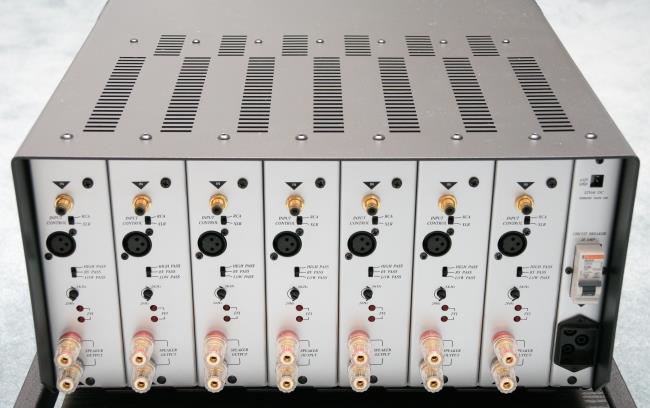|
|||||||||
|
Introduction As Joseph Sahyoun, President of Earthquake Sound, and I sat there talking, a twinkle came into his eye. "I can't compromise on quality," he said, "and it makes everything too expensive." "I know, I must be crazy." No, not crazy. Just passionate, about audio. I'm that way too. I stay up late fiddling with that one control that has taken me all afternoon to try and make things just right. I think many of you readers are that way too. It is what makes the home theater and hi-fi world so much fun. The irony is that the resulting product, in this case, a 120 pound seven-channel power amplifier, with a 4,000 watt toroidal power transformer, that delivers 300 watts RMS per channel, is not all that expensive. $6,000 . . . well, it isn't cheap, but nowadays, you can spend more than that on a receiver. We tested the five-channel version of this amplifier in 2004, and at the time, Joseph told me they were making some changes in future versions. So, I decided to take a look - and a listen - to the seven-channel Cinénova Grande, and find out what changes had been made for 2006. The Design The current Cinénova is still a class A/B design, with each channel a removable module that has its own power supply, except for the transformer, which is 4 kVa and has seven secondaries, one for each module. Because the supply is massive, the output doubles into 4 ohms, and is rated into 2 ohms. The basic change in the newer units consists of less circuit in the input stage signal path. The result is a wider frequency response. The 2004 version tested out to have a ± 0.3 dB, 20 Hz to 40 kHz response. As you will see in the bench tests here, the response now is very flat all the way out to 90 kHz and also is flatter at the low frequency end. The front panel of the amplifier is simple, with an On/Off toggle and seven lights to indicate when any channel is going into clipping (I never saw them come on during the tests). Click the photo above to see a larger version. The rear panel shows that each channel is a module. To remove the module, you take out the chassis screws, remove the cover, and then remove the module for repair or fuse replacement. I think this amplifier will be extremely popular with custom installers, but I would like to see modules be removable without taking off the chassis cover, and the rail fuses be externally mounted. Each channel has an unbalanced RCA and balanced XLR input (a slider switch selects one or the other), a low-pass/high-pass/bypass switch that lets you roll off all signals above or below a chosen frequency, which is selected using a rotary knob, two red LEDs that will indicate if rail voltage fuses are blown, and a set of five-way speaker binding posts. The main fuse on the far right is a circuit breaker that can be reset, below which is the grounded AC input socket. This socket is not a typical one, and uses the high current power cord that comes with the amplifier.
|
|||||||||





